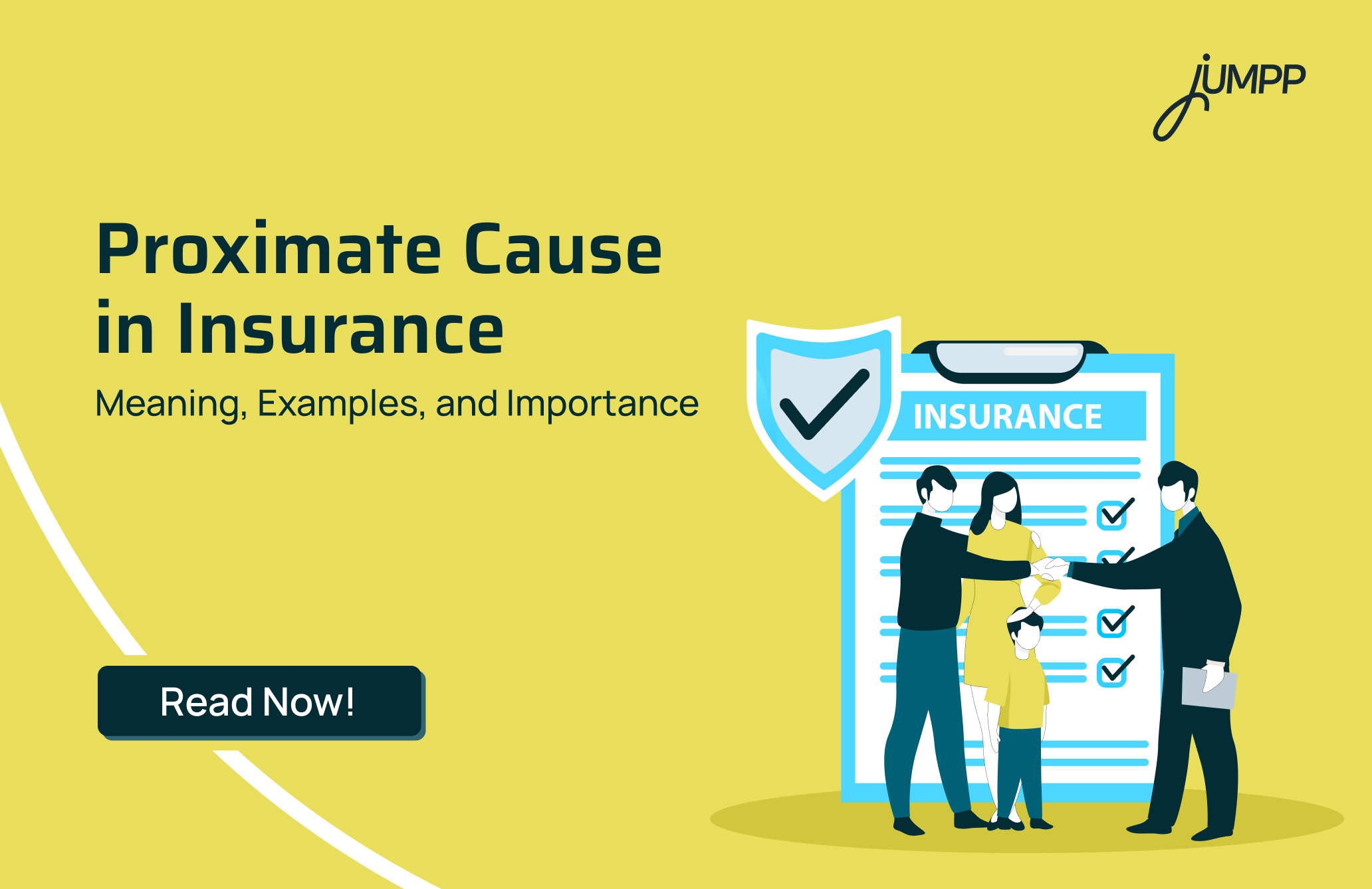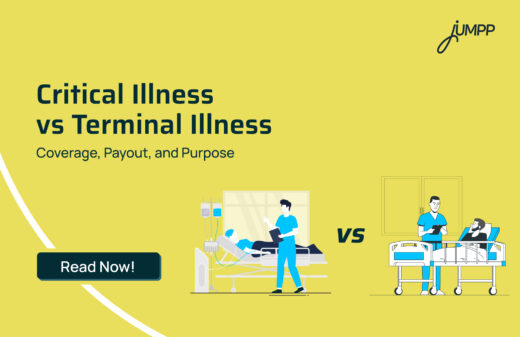Proximate Cause in Insurance – Principle, Examples, and Role in Claim Settlement

Most people think insurance claims are about what happened. But in reality, they are about why it happened. The same event can lead to two completely different outcomes depending on what caused it in the first place. That deciding factor is what the insurance world calls the proximate cause. It is the real, dominant reason behind a loss. The proximate cause is the principle that ensures every claim is settled by causation and proof.
Let us understand the principle of proximate cause in insurance in detail!
What is Proximate Cause in Insurance
The concept of proximate cause refers to the main and most effective reason behind a loss. It is the factor that triggers the sequence of events leading to the damage. It is used to decide whether a claim is valid by identifying if the direct cause of the loss falls under the risks covered by the policy.
The proximate cause is not necessarily the first or final event in the chain. It is the one that plays the most significant and influential role in producing the loss.
What is the Principle of Proximate Cause in Insurance?
The principle of proximate cause, also known as causa proxima, refers to the rule that the nearest, most direct, and most effective cause of a loss is considered when determining an insurer’s liability.
How the Principle of Proximate Cause Works in Insurance Claims
It is used to assess whether a claim is valid by identifying the leading cause in a sequence of events and confirming whether it is a peril covered under the policy.
Determines the dominant cause:
This principle helps insurers identify the single event that most directly led to the loss.
It may not always be the first or last event in the sequence, but it is the one that had the strongest influence in producing the outcome.
Establishes insurer liability:
Compensation is provided only if the identified cause is one of the perils covered under the insurance policy.
Relevant across insurance types:
The principle applies widely in property, marine, fire, and other insurance branches, where identifying the root cause is critical to fair claim settlement.
Excludes indirect causes:
Remote or indirect factors that contribute to the loss without directly producing it are ignored.
For example, if a ship’s cargo is damaged by seawater entering through a pipe chewed by rats, the damage by seawater is considered the proximate cause, not the rat activity, which is a remote cause.
How Proximate Cause Is Determined During Claim Assessment
When a claim is lodged, insurers follow a defined process to trace the true cause of loss.
- Site inspection: Surveyors assess the affected property or cargo to gather factual details.
- Evidence collection: Photographs, weather data, and maintenance logs help reconstruct the sequence of events.
- Expert evaluation: Engineers or loss assessors analyse the damage to identify the main cause accurately.
- Cross-check with policy coverage: The determined cause is matched against the policy’s list of insured and excluded perils.
- Final documentation: The insurer records the findings to justify the claim outcome.
This structured process ensures transparency, consistency, and fairness in claim decisions.
Proximate Cause and Policy Inclusions & Exclusions
Every insurance policy lists certain exclusions, events, or situations that are not covered. Even if part of a loss involves a covered peril, the insurer will not be liable if the proximate cause falls within an exclusion.
| Covered Perils (Inclusions) | Non-Covered Perils (Exclusions) |
| Fire and explosion (unless caused intentionally) | War, invasion, or acts of terrorism (unless specifically included) |
| Storms, lightning, and tempests | Floods, earthquakes, or tsunamis (if not covered under the policy) |
| Theft or burglary | Wilful damage or negligence by the insured |
| Accidental damage caused by external impact | Gradual wear and tear or depreciation |
| Burst pipes or accidental water leakage | Damage due to poor maintenance or existing defects |
| Collision or overturning (for motor insurance) | Mechanical or electrical breakdown not caused by an insured event |
| Cargo loss due to collision (in marine insurance) | Loss due to delay, improper packing, or rat infestation |
| Fire following an accident or natural disaster | Nuclear risks or radioactive contamination |
Proximate Cause Insurance Example
A common example that illustrates the concept of proximate cause in insurance is when a storm causes a tree to fall on a car, resulting in a fire. In this situation, the storm is considered the proximate cause, the direct and immediate reason behind the loss.
On the other hand, the fire is a consequence of that event.
If the insurance policy includes coverage for storm-related damage, the claim would be accepted because the proximate cause (the storm) is an insured peril. However, if the policy specifically excludes damage caused by storms, the claim would likely be rejected, as the proximate cause is not covered.
More Proximate Cause Insurance Examples:
- House Fire: If a fire breaks out due to faulty electrical wiring and electrical faults are not covered under the policy, the claim may be denied, even if another insured peril, such as lightning, contributed to some of the damage.
- Factory Insurance: Suppose an electric spark triggers a small explosion that leads to a major fire destroying the entire factory.
In this instance, the fire is regarded as the proximate cause because it is the event that directly caused the destruction. Therefore, the insurer would generally accept the claim if fire damage is covered, regardless of whether explosions are excluded.
- Shipment of Goods: In marine insurance, if a violent storm causes a vessel to crash, damaging the cargo, and the policy includes coverage for losses due to external impact, the collision is regarded as the proximate cause.
- Open Window: Imagine a policyholder leaves a window open during a rainstorm, and rainwater enters the house, damaging the furniture and flooring.
The storm, not the open window, is regarded as the proximate cause of the damage. Hence, if the policy covers storm-related losses, the claim would be accepted.
Importance of Proximate Cause in Insurance Claims
The principle of proximate cause holds great importance. This principle also helps resolve disputes by analysing the chain of events leading to the loss and remains essential even when multiple causes are involved.
- Determines Coverage and Liability: The insurer’s responsibility to pay depends on identifying the proximate cause of the loss.
If this cause is one of the insured perils, the claim will generally be accepted. Conversely, if the proximate cause is an excluded peril, the claim may be rejected.
- Clarifies Complex Claims: In situations where several events contribute to a loss, the principle helps separate and identify the event that was the most direct or dominant cause.
This enables insurers to trace the true origin of the damage and apply the correct policy conditions.
- Ensures Fairness: Proximate cause protects both parties.
It prevents insurers from paying for losses that are not directly linked to a covered event, while ensuring that valid claims are honoured promptly and fairly.
- Applies Even with Concurrent Causes: When more than one cause occurs at the same time, this principle helps determine which was the most influential in producing the loss.
For instance, if a fire results in a subsequent flood, the fire would be treated as the proximate cause, and the insurer would be liable if fire damage is covered by the policy.
- Distinguishes Remote Causes: Proximate cause is distinct from remote causes, which are indirect or secondary events that only contribute to the loss.
Insurance policies generally exclude such remote causes because they are too far removed from the actual occurrence of the damage.
Understanding the principle of proximate cause is just one step toward smarter insurance decisions. Learn how a family floater health insurance plan can protect your entire family under one policy and simplify your health coverage.
Conclusion
The principle of proximate cause is one of the most fundamental ideas in insurance, shaping how claims are assessed and settled. It ensures fairness, accuracy, and transparency in every case. Before you buy or renew your insurance policy, take time to understand such core concepts — they help you choose the right coverage and prevent surprises during claim time.
Proximate Cause- FAQs
Proximate cause is the main and most effective reason behind a loss that directly leads to the damage covered under an insurance policy. When a storm (a covered peril) causes a tree to fall on a car and start a fire, the storm is the proximate cause, and the entire loss is covered.
The concept of proximate cause is a principle in insurance law that identifies the most direct, dominant, and uninterrupted cause of a loss. It ensures that liability is assigned to the event most responsible for the damage, not to remote or indirect causes.
In insurance, proximity refers to the rule of proximate cause, which focuses on the nearest and most effective cause of a loss. It helps determine whether a claim falls under the policy’s coverage or not.
In simple terms, proximity means identifying the real and immediate reason behind a loss. It asks which event was the true and dominant cause of the damage, ignoring distant or indirect factors.
The principle of proximate cause offers clarity and fairness in insurance claim settlements. It ensures that compensation is provided only for losses directly resulting from insured events, reducing confusion and disputes.
Determining a single dominant cause often requires legal and technical interpretation, which can delay claims or create disagreements between insurers and policyholders.






